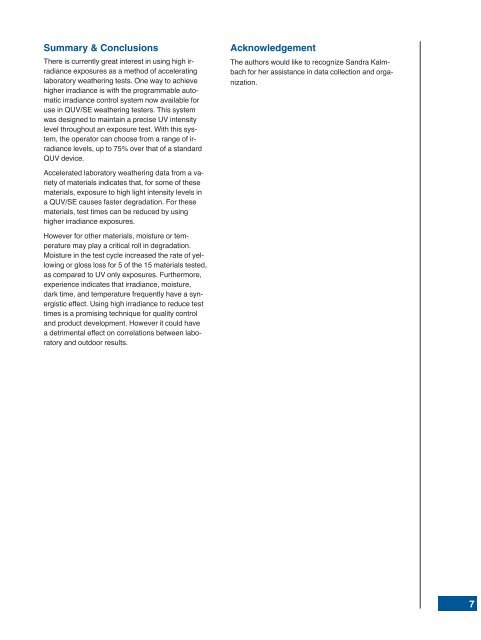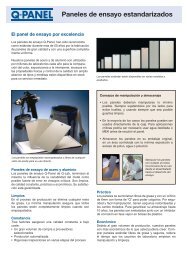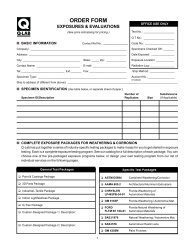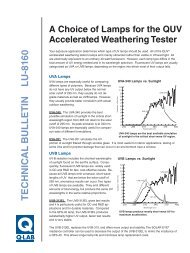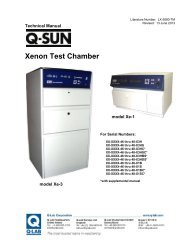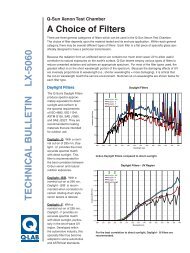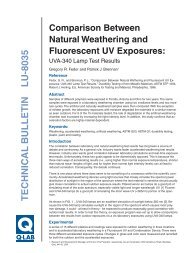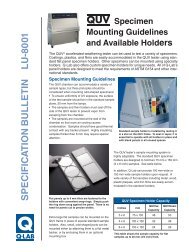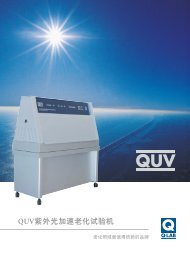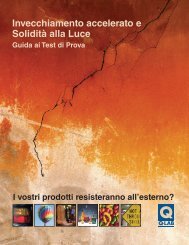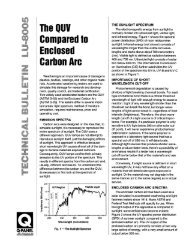LU-8031 - High Irradiance UV Testers - Q-Lab
LU-8031 - High Irradiance UV Testers - Q-Lab
LU-8031 - High Irradiance UV Testers - Q-Lab
You also want an ePaper? Increase the reach of your titles
YUMPU automatically turns print PDFs into web optimized ePapers that Google loves.
Summary & Conclusions<br />
There is currently great interest in using high irradiance<br />
exposures as a method of accelerating<br />
laboratory weathering tests. One way to achieve<br />
higher irradiance is with the programmable automatic<br />
irradiance control system now available for<br />
use in Q<strong>UV</strong>/SE weathering testers. This system<br />
was designed to maintain a precise <strong>UV</strong> intensity<br />
level throughout an exposure test. With this system,<br />
the operator can choose from a range of irradiance<br />
levels, up to 75% over that of a standard<br />
Q<strong>UV</strong> device.<br />
Acknowledgement<br />
The authors would like to recognize Sandra Kalmbach<br />
for her assistance in data collection and organization.<br />
Accelerated laboratory weathering data from a variety<br />
of materials indicates that, for some of these<br />
materials, exposure to high light intensity levels in<br />
a Q<strong>UV</strong>/SE causes faster degradation. For these<br />
materials, test times can be reduced by using<br />
higher irradiance exposures.<br />
However for other materials, moisture or temperature<br />
may play a critical roll in degradation.<br />
Moisture in the test cycle increased the rate of yellowing<br />
or gloss loss for 5 of the 15 materials tested,<br />
as compared to <strong>UV</strong> only exposures. Furthermore,<br />
experience indicates that irradiance, moisture,<br />
dark time, and temperature frequently have a synergistic<br />
effect. Using high irradiance to reduce test<br />
times is a promising technique for quality control<br />
and product development. However it could have<br />
a detrimental effect on correlations between laboratory<br />
and outdoor results.


